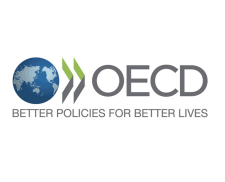
This report—a joint effort of the European Commission and the OECD—provides a comprehensive international comparison of integration outcomes of immigrants and their children. It monitors 74 indicators in the areas of skills and labour, living conditions, civic engagement, and social integration in all EU and OECD countries, as well as selected non-OECD G20 countries.
The report includes a chapter on the situation of third-country nationals in the EU and can be used for the monitoring of the EU Common Indicators (‘Zaragoza’ indicators) to assess the integration of third-country nationals. The report also includes chapters on young people with an immigrant background and on gender differences.
Notable findings from the report
Demographics
More than half of the foreign-born population in the EU originate from another European country, with around 20% coming from European countries outside the EU. Over two-thirds of immigrants in the OECD and EU have lived in their host country for at least 10 years. Women are now the majority of immigrants living in EU countries.
Education
The share of highly educated individuals among immigrants has grown throughout the OECD and the EU, rising by 7 percentage points over the past decade. The rise was, however, steeper for the native-born (+10 percentage points EU-wide).
Reading literacy gaps between 15-year-olds native pupils with and without migration backgrounds shrank in most countries over the last decade, but not in Southern Europe (excluding Portugal), France, and Sweden.
The share of resilient students (i.e. top performers despite a disadvantaged socio-economic background) among the native-born children of immigrants has risen by 3 percentage points in the EU over the last decade, while it remained stable for the children of natives. As a result, the disadvantage of children of immigrants that was observed a decade ago has disappeared.
Employment
In the EU, the employment rate of non-EU migrants has dropped 3 percentage points over the past decade, while rising 3 points for both natives and EUborn migrants. Immigrant women are more like to be economically inactive than native-born women, and this is more often ‘involuntary’. Differences between foreign- and native-born women are especially wide in the Benelux countries, Scandinavian countries (except Sweden), Poland, and Southern European countries (except Spain).
Over one in four low-skilled jobs in the EU is held by an immigrant. The proportion is over 40% in Austria, Germany, Sweden, and Norway, and over 60% in Switzerland and Luxembourg. Almost one in four economically inactive migrants wishes to work, compared to one in six among the native-born.
In almost half of EU countries, low-educated immigrants have higher employment rates than their native-born peers, particularly in Southern and Central Europe. By contrast, highly educated immigrants are less likely to be employed than their native peers in virtually all countries. Among highly educated immigrants, almost 45% are either unemployed or in jobs for which they are overqualified, compared to 30% of the highly educated nativeborn. Over-qualification affects 42% of foreign-educated immigrants compared with 28% of immigrants with host-country qualifications.
Language
In the EU, two-thirds of the foreign-born population state that they have at least advanced language proficiency in one of the official languages of the host country. 56% of recently arrived non-native speakers in need of language training have attended classes since their arrival. This rises to 70% in Nordic and German-speaking countries.
Poverty
Around 30% of immigrants live in relative poverty in the EU, compared to 17% of natives. The immigrant in-work poverty rate is about 19%, which is twice as high as for natives. 40% of all children in immigrant households live below the relative poverty line, twice the level of children in native households.
Social integration
In all EU countries, more than 80% of immigrants report feeling close or very close to their country of residence, going up to around 95% in France. Native-born individuals who interact with the foreign-born are more likely to consider immigration as an opportunity, particularly when interactions occur in the workplace. However, almost one in five third-country nationals feel that they belong to a group that is discriminated against on the grounds of ethnicity, nationality, or race.
The report is available on the OECD website.
Details
- Authors
- OECD, European Commission
- Geographic area
- EU Wide
- Contributor type
- International organisation
- Original source
- Posted by
